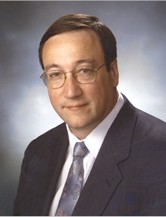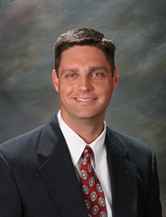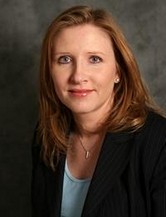Do nonprofits need a chief strategy officer? Increasingly, the answer is yes. "It's a role that has been less common in the nonprofit arena, but over the past decade the private sector has demonstrated the value of a CSO to deploy strategy in the short term and keep a focus on the mid- and long-term horizon and vision," says Michael Mortell, director of the Strategy Counts1 initiative at the Alliance for Children and Families.
The initiative, which began in 2011 with a $5 million grant from The Kresge Foundation, was created as a learning lab with 20 pilot sites to respond to market forces in ways that further help children and families. Several of the participating members have created CSO positions to help in their response and to capture some of the same value that the private sector has gained from the role.
Need a Chief Strategy Officer?

Find great candidates for your nonprofit leadership team. Bridgespan's Job Board can help you recruit qualified CSOs, CEOs, CFOs, directors, managers, and more.
While helping their organization increase impact is the strategy officer's primary goal, the experience of three CSOs in the Strategy Counts initiative shows how actual roles vary. The trio is responsible for projects with a mix of internal and external goals. They serve as innovators, M&A scouts, operations experts, divestiture managers, and talent developers. And often, CSOs are an extension of the CEO. The particular combination of skills and priorities depends on what the organization seeks to accomplish, as well as the personalities and experiences of the top executives.
The Internal Innovator
At Holy Family Institute, innovation is such a big part of Glenn Wilson's job that it's even been added to his title—chief strategy and innovation officer. His diverse background, which includes teaching, entrepreneurship, a master's degree in creativity and innovation, and running a change-management consulting business, speaks to it as well.

Glenn Wilson, Holy Family Institute
Wilson is primarily focused on process innovation at Holy Family Institute, an $18 million faith-based organization founded in 1900 to care for orphans. Today, the organization provides a diverse array of services such as family stabilization, care management, career training, utility assistance, help with alcoholism and drug addiction, and mental health counseling to more than 11,000 children and families in Western Pennsylvania each year.
Specifically, he makes internal processes and programs run more effectively and efficiently, and explores new ways to approach the nonprofit's work. His current responsibilities include helping staff and clients achieve higher levels of ownership and "co-create the future with them", by applying human-centered design, creative and critical thinking tools and processes. "We truly believe if you give people higher levels of ownership and work with them as a partner, then we're going to get things done much faster."
Wilson spends 50 to 60 percent of his time in the field with frontline staff from Holy Family Institute's 18 service lines, at points of care, in court rooms, and everywhere in between. "I'm not an administrator sitting at a desk in an office because I can't develop strategy that's usable for the organization like that," Wilson says. "How can I help an organization move forward," he adds, "if I don't understand what the reality of our frontline services are?"
He joined Holy Family in 2012, taking on a CSIO role clearly defined by its CEO, Sister Linda Yankoski. "She was very clear and purposeful about what my role is and what the expectations are of the role," Wilson says. He also says there is a clear separation of duties. "She holds me accountable, but understands that the vision and the reason why I'm here is because she needs to do other things—and there are only so many hours in every day," he adds. Working in this capacity has allowed Holy Family to continue developing highly innovative programs like Holy Family Academy. This new, Catholic high school targets low income students who are most likely to drop-out of high school and provides them with the tools and skills necessary to create a pathway out of poverty by preparing students to succeed in post-secondary education including apprenticeship programs, two-year technical programs, or traditional four-year colleges.
The Implementer
Greg Ryan moved into the CSO role at Omaha-based Heartland Family Service in 2012, after more than 11 years with the $23 million organization. Heartland operates 47 programs addressing family issues such as domestic violence, teen drug addiction, struggling parents and couples, mental health, and juvenile delinquency. The organization, which was established in 1875, serves 40,000 to 50,000 people annually in 12 counties.

Greg Ryan, Heartland Family Service
Ryan began as a therapist, moved to program director, and most recently led quality improvement and compliance. "I was coming into the quality improvement role when our CEO John Jeanetta joined the agency," recalls Ryan. "He has a focus on strategy, and that's an area that I'm naturally drawn to." Quality improvement has some overlap with strategy, Ryan adds, and as he began to share plans for his work, Jeanetta shared his vision for deploying strategy in the agency. "A lot of those interests started to overlap quite a bit," he adds, which led Jeanetta to delegate strategy-related tasks to Ryan and eventually appoint him CSO.
Within this multifaceted organization, Ryan oversees the implementation of the strategic plan, information technology as it pertains to strategy, and quality improvement--all from a high level, leadership team perspective. He focuses on strengthening the organization's ability to demonstrate its impact in the community. To do that, Heartland is getting more "data driven," he adds, to make decisions based on hard evidence of returns. Consequently, the information technology group reports to him because data is so vital to strategy.
In a more externally-focused capacity, Ryan works with Heartland's CFO to assess opportunities for new funding and mergers and acquisitions. He's also helping to build a business development team to incubate new program ideas as part of a four-year vision for Heartland.
Some of this work naturally overlaps with what the CEO does, but Ryan says, Jeanetta is "the best communicator of strategy as the leader of the organization." "I can communicate the logistics and the nuts and bolts and the implementation pieces," he adds, "but the vision piece, it doesn't mean as much coming from me as it does coming from him."

Tine Hansen-Turton, PHMC
The Connector
Although Tine Hansen-Turton is the first official CSO at Public Health Management Corp. (PHMC), she had been doing much of the job informally through other positions since 2002. Hansen-Turton, for example, had helped grow seven lines of business at PHMC and overseen research programs.
PHMC, based in Philadelphia, partners with communities, government, foundations, and businesses to promote health and provide services through 300 programs and 11 subsidiaries. The 42-year-old organization serves 300,000 people annually. While various divisions had long been conducting strategic planning, in 2011, the organization went through its first corporation-wide strategic positioning, aimed to align the whole organization and its divisions with the overall corporate strategy and direction. PHMC then set about building the infrastructure, internal capacity, and culture to support it. The creation of the CSO position, Hansen-Turton said, had a lot to do with the organization's growth.
With one third of the organization under the CSO role, Hansen-Turton's purview is varied, including organizational development and learning, mergers and affiliations, government relations, and emergency preparedness. Her role is primarily externally focused, including evaluation of programs to divest as well as which to expand, and where to partner with other organizations for affiliate programs. In addition to her CSO role, she also runs the National Nursing Centers Consortium, a PHMC affiliate that operates 500 nurse-managed health centers. Like Wilson, she advises that a CSO understand operations. Thinking big thoughts about growth and five-year plans is one thing. But active involvement in operations "gets you grounded to what's realistic," she says, which helps makes execution of any new initiative go more smoothly.
Staying grounded also means the CEO and CSO must "click the same way," Hansen-Turton adds. For this reason, she believes it can be easier to bring an internal candidate into the role, because trust between them already exists. This especially comes in handy when implementing strategy means shaking things up. Having the interpersonal finesse and mental toughness to carry that off is critical. The CSO doesn't always have to agree with fellow C-level colleagues, says Hansen-Turton. She's a believer in the creative tension that comes from a "good and honest relationship with the CEO." Sometimes they argue but both know when to back down.
Additionally, Hansen-Turton says, "political savviness is critical in this role. That means dealing with internal politics because you've got to move a lot of people in your direction."
**********
The CSO role can be a path to exploring new opportunities and new approaches to serving beneficiaries. CSOs also help to move an organization in a direction that addresses short-term needs in the context of long-term strategic goals. Says Hansen-Turton: "The value in a CSO role is having somebody who works closely with the CEO and pushes all the opportunities that are available to them—then follows up and executes." It's this type of focused effort on strategy, says Strategy Count's Mortell, that can help a nonprofit organization get closer to its vision.

